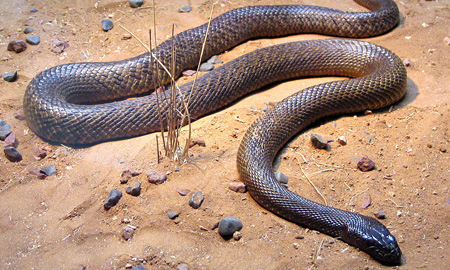Introduction
When it concerns venomous snakes, Australia is home to several of the most remarkable and hazardous species on the planet. Among these, the Tiger Snake attracts attention not just for its potent venom however additionally for its intriguing habits. Recognizing the behavior of venomous snakes like the Tiger Snake is crucial for both wild animals lovers and those living in locations where these snakes exist. This article looks into numerous facets of Tiger Serpent actions, environment, recognition, precaution, and emergency treatment practices in situation of a snake bite.
Understanding the Behavior of Venomous Snakes Like the Tiger Snake
The Tiger Snake, scientifically known as Notechis scutatus, is infamous for its hostile nature when threatened. These snakes exhibit a series of actions that can be fairly various from their non-venomous counterparts.

Characteristics of Tiger Snakes
The Tiger Snake is easily identifiable as a result of its distinctive bands or red stripes that resemble a tiger's markings. They can differ in color from yellowish-brown to dark olive or black. This coloration offers not just as camouflage however also as a caution signal to prospective predators.
Adaptability to Environment
One exceptional aspect of their actions is their flexibility to various settings. Located mainly in seaside areas, marshes, and wetlands across Australia and Tasmania, they can prosper in varied environments including city areas.
Hunting Techniques
Tiger Serpents are ambush predators mainly feeding on fish, frogs, and tiny mammals. They possess keen eyesight and an acute feeling of odor which aids them in situating victim effectively.
Venom Composition
Their poison consists of neurotoxins that affect the nervous system, resulting in paralysis or fatality in smaller pets. For people, instant clinical interest is critical after a tiger serpent bite because of its possibly dangerous effects.
Natural Habitat of Tiger Snakes
Preferred Locations
Understanding where these serpents live sheds light on their behavior patterns. The tiger snake habitat consists of:
- Coastal regions Swamps Grasslands Urban areas with bountiful water sources
Seasonal Movements
During warmer months, Tiger Snakes are more energetic as they indulge in sunlight or hunt for food. In contrast, cooler months see them pulling away into hibernation sites.
Are Tiger Snakes Venomous?
Yes! The concern "are tiger serpents venomous?" usually develops among those not familiar with this varieties. Their poison is considered among the most dangerous among all snake species worldwide.
Symptoms of a Tiger Serpent Bite
If bitten by a tiger serpent, signs might consist of:
- Localized pain Swelling at the bite site Nausea and vomiting Sweating and confusion
Immediate clinical help is important as neglected attacks can result in severe wellness issues and even death.
First Help for Snake Bites: Quick Feedback Guide
Knowing how to administer first aid for a serpent bite might save a person's life. Right here's what you should do:
Step 1: Stay Calm
Keeping calm helps reduce heart rate which lowers poison spread.
Step 2: Debilitate the Impacted Area
Keep the influenced arm or leg still and below heart degree if possible.
Step 3: Call Emergency Situation Services
Always look for expert clinical assistance promptly blue belly black snake after a serpent bite.


First Aid for Snake Bite Package Essentials
A well-appointed snake bite first aid kit must include:
- A compression bandage Antiseptic wipes A pair of scissors An ice bag
Safety Preventative measures: Preventing Snake Bites in Australia
Awareness Programs
Educating areas The original source about local serpent varieties and their actions can considerably reduce experiences bring about bites.
Avoiding Dangerous Areas
Staying far from lengthy grass throughout warmer months minimizes call with snakes that might be relaxing or hunting.
Common Misunderstandings About Tiger Snakes
Many individuals believe More helpful hints misconceptions about the behaviors of tiger serpents bring about unnecessary worry. Below are some information:
Myth 1: All Tigers Are Aggressive
Not all tiger snakes will present hostility if left undisturbed; many prefer taking off instead of confrontation.
Myth 2: They Chase Humans
Tiger serpents do not actively go after people; they might strike when they feel endangered yet will usually retreat if given space.
Conservation Efforts Associated with Venomous Snakes
Conservation initiatives concentrate on enlightening communities regarding shielding local wild animals while lessening human-snake interactions.
Importance of Ecosystems
Understanding that venomous snakes play a vital function in maintaining ecological balance helps foster appreciation instead of worry in the direction of them.
FAQs About Tiger Snakes
What ought to I do if I experience a tiger snake?- Maintain distance and gradually retreat without abrupt movements.
- While bites aren't exceptionally usual because of awareness initiatives, they still take place yearly within Australia.
- Baby tiger snakes can supply complete doses of venom regardless of being smaller sized; therefore care is advised around them.
- They largely take in frogs, fish, tiny mammals like rodents, and various other reptiles.
- It's illegal in a lot of jurisdictions without appropriate licensing due to security worries concerning their venom.
- Wear strong boots and remain on marked routes; look before placing hands or feet into concealed areas like rocks or logs.
Conclusion
Understanding the behavior of poisonous serpents like the Tiger Serpent not only improves our understanding but likewise promotes safety recognition amongst those living near their environments. From recognizing their attributes, recognizing first aid protocols adhering to a bite, with engaging preservation initiatives-- every facet plays a necessary duty in cultivating conjunction with these fascinating reptiles while valuing their place within our ecosystem.
As we grow our understanding with education and experience, we add favorably toward making certain both human security and wildlife conservation-- benefitting all parties involved!